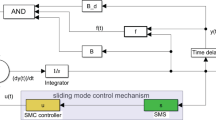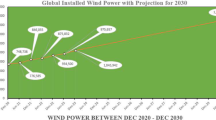Abstract
Comparability of emergency control strategies with different instability modes is the key issue to decide which control strategy to be implemented. This paper considers that the essential factor causing instability should be used to form a unified standard to assess the effectiveness of control strategies with different instability modes. Thus a switching control stabilization principle was proposed based on elimination of the unbalanced energy between mechanical and electrical energies of generator sets. Along this way, the difficulty of seeking a Lyapunov function was circumvented. According to the principle, an emergency control algorithm framework was established to handle transient stability assessment, control location selection and control amount evaluation. Within the framework, this paper studied instability mode transition, then proposed an algorithm based on prediction function and a new approach to normalized stability margin stemmed from static EEAC method, which can increase comparability of various control locations. The simulations on the New-England System verified the proposed emergency control method for stabilizing transient stability.
Similar content being viewed by others
References
Anderson P M, LeReverend B K. Industry experience with special protection schemes. IEEE Trans Power Syst, 1996, 11(3): 1116–1179
Miroslav Begovic, Damir Novosel, Daniel Karlsson, et al. Wide-area protection and emergency control. Proc IEEE, 2005, 93(5): 876–891
IEEE/CIGRE Joint Task Force on Stability Terms and Definitions. Definition and classification of power system stability. IEEE Trans Power Syst, 2004, 19(2): 1387–1401
Kundur P. Power System Stability and Control. New York: McGraw-Hill, 1994
Fouad A A, Vittal V. Power system transient stability analysis using the transient energy function method. New Jersey: Prentice Hall, 1992
Taylor C W. Power System Voltage Stability. New York: McGraw-Hill, 1994
LaSalle J P. Some extensions of Lyapunov’s second method. IRE Trans Circuit Theory, 1960, 7(4): 520–527
Kakimoto N, Ohsawa Y, Hayashi M. Transient stability analysis of multi-machine power systems with field flux decay via Lyapunov’s direct method. IEEE Trans Power App Syst, 1980, 99(5): 1819–1827
Fouad A A, Vittal V, Ni Y X, et al. Direct Transient stability assessment with excitation control. IEEE Trans Power Syst, 1989, 2(4): 75–82
Pai M A, Padivar K R, Radhakrishna C. Transient stability analysis of multi-machine AC/DC power system via energy function method. IEEE Trans Power App Syst, 1981, PAS-100(12): 5027–5035
Chiang H D, Wu F F, Varaiya F F. Foundations of the direct methods for power system transient stability analysis. IEEE Trans Circuits Syst, 1987, 34(2): 160–173
Min Y, Li H, Lin Z F. Extended 0–1 programming on-line quasi real-time decision-making algorithm based on the absolute kinetic energy increment (in Chinese). Proc CSEE, 2003, 23(3): 5–9
Xue Y S. Quantitative Study of General Motion Stability and an Example on Power System Stability (in Chinese). Nanjing: Jiangsu Science and Technology Publishing House, 1999
Fang Y J, Fan W T, Chen Y H, et al. An on-line transient stability control system of large power systems (in Chinese). Autom Elect Pow Sys, 1999, 23(1): 8–12
Ota H, Kitayama Y, Ito H, et al. Development of transient stability control system (TSC system) based on on-line stability calculation. IEEE Trans Power Syst, 1996, 11(3): 1463–1472
Wang J Q, Wang W S, Zhu Z Q, et al. Optimal load-shedding algorithm in power system (in Chinese). Autom Elect Pow Sys, 1997, 21(3): 33–36
Zhang R Q, Min Y, Hou K Y. A new method for generation shedding and load shedding in power system emergency control (in Chinese). Autom Elect Pow Sys, 2003, 27(18): 6–12
Yu Y N. Electric Power System Dynamics. New York: Academic Press, 1983. 214–215
Lu Q, Wang Z H, Han Y D. Optimal Control of Transmission System (in Chinese). Beijing: Academic Press, 1984. 203–208
Pai M A. A new approach to dynamic security assessment using trajectory sensitivities. IEEE Trans Power Syst, 1998, 13: 953–958
Lemmon W W, Mamandur K R C, Barcelo W R. Transient stability prediction and control in real-time by QUEP. IEEE Trans Power Syst, 1989, 4(2): 627–642
Fouad A A, Vittal V, Tae K O. Critical energy for transient stability assessment of a multi-machine power system. IEEE Trans Power App Syst, 1984, 103: 2199–2206
Saha S, Vittal V, Kliemann W, et al. Local approximation of stability boundary of a power system using the real normal form of vector fields. In: Proc IEEE Inter Symp Circuit Sys, Vol 3. Seattle: IEEE, 1995. 2330–2333
Xue Y, Van Cutsem Th, Ribbens-Pavella M. A simple direct method for fast transient stability assessment of large power systems. IEEE Trans Power Syst, 1988, 3(2): 400–412
Xue Y. Integrated extended equal area criterion theory and application. Electricity (English Journal of CSEE), 1995
Fouad A A, Vittal V. Power System Transient Stability Analysis Using the Transient Energy Function Method. New Jersey: Prentice Hall, 1992. 12–45
Mania P, Damien E, Daniel R V. Transient Stability of Power Systems: A Unified Approach to Assessment and Control. London: Kluwer, 2000. 37–39
Zhang J, Chen Y, Xue Y S. Classification of swing curves in transient stability analysis (in Chinese). Autom Elect Pow Sys, 1997, 21(8): 1–4
Dai C S, Xue F, Xue Y S. Classification of disturbed trajectories (in Chinese). Autom Elect Pow Sys, 2000, 13–16
Chiang H D, Tong J Z, Miu K N. Predicting unstable modes in power systems: Theory and computations. IEEE Trans Power Syst, 1993, 8(4): 1429–1437
Scala M L, Lorusso G, Sbrizzai R, et al. A qualitative approach to the transient stability analysis. IEEE Trans Power Syst, 1996, 11(4): 1996–2002
Anton H. Calculus: A new horizon. New York: Wiley, 1999
Author information
Authors and Affiliations
Corresponding author
Additional information
Supported by the National Science Foundation of China (Grant Nos. 50525721, 50595411)
Rights and permissions
About this article
Cite this article
Zhang, X., Mei, S. & Wu, S. Transient stability and emergency control. Sci. China Ser. E-Technol. Sci. 52, 420–428 (2009). https://doi.org/10.1007/s11431-008-0273-8
Received:
Accepted:
Published:
Issue Date:
DOI: https://doi.org/10.1007/s11431-008-0273-8




